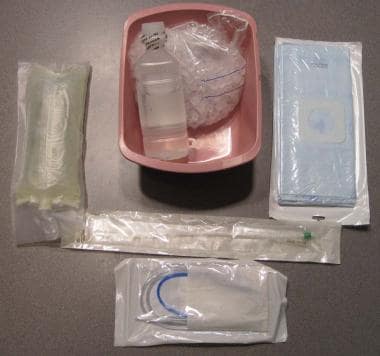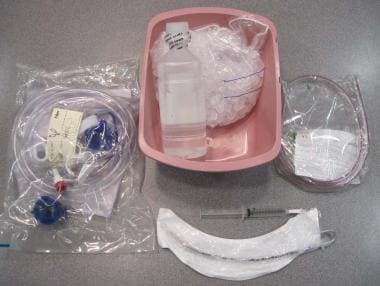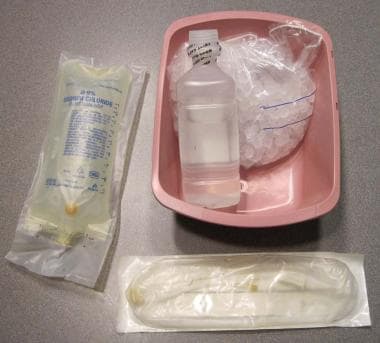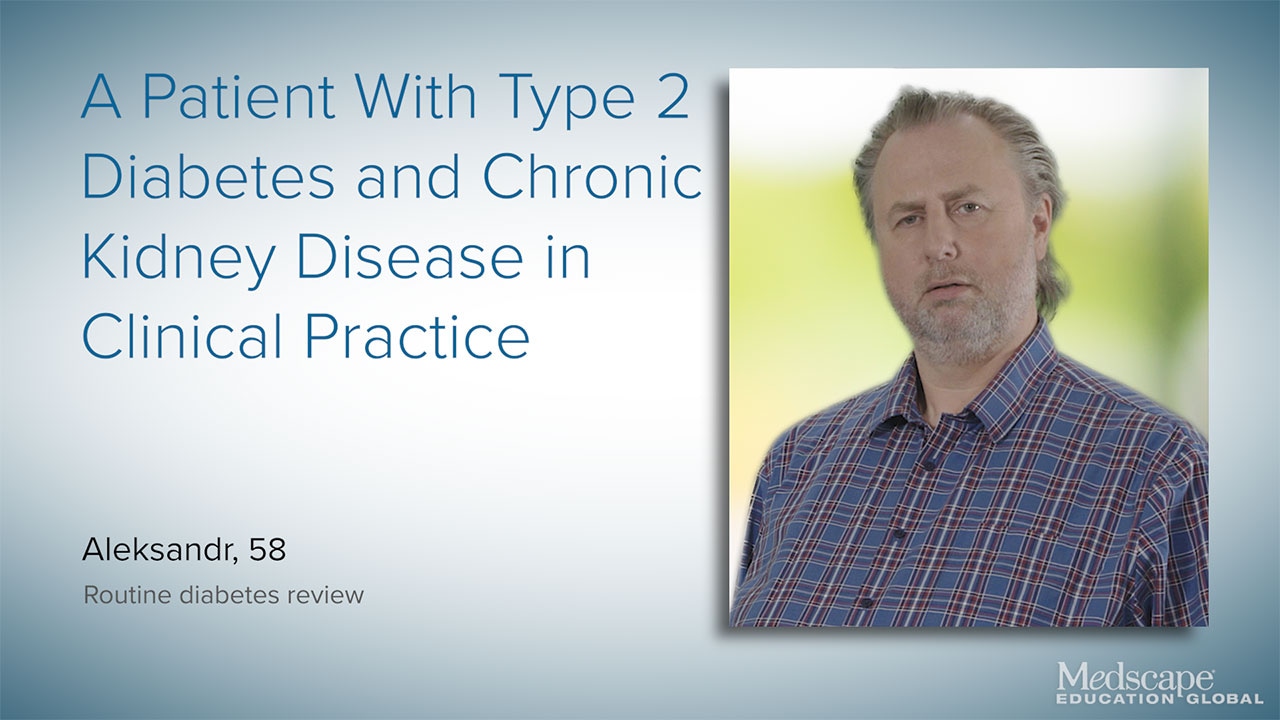Practice Essentials
Heat illness may be viewed as a continuum of illnesses relating to the body's inability to cope with heat. It includes minor illnesses, such as heat edema, heat rash (ie, prickly heat), heat cramps, heat tetany, as well as heat syncope and heat exhaustion. Heat stroke is the most severe heat-related illness and is defined as a body temperature higher than 40°C (104°F) associated with neurologic dysfunction. [1, 2]
Two forms of heat stroke exist. Exertional heat stroke (EHS) generally occurs in young individuals who engage in strenuous physical activity for a prolonged period in a hot environment. Classic nonexertional heat stroke (NEHS) more commonly affects sedentary elderly individuals, persons who are chronically ill, and very young persons. Classic NEHS occurs during environmental heat waves and is more common in areas that do not typically experience periods of prolonged hot weather. Both types of heat stroke are associated with high morbidity and mortality, especially when cooling therapy is delayed.
With the influence of global warming, it is predicted that the incidence of heat stroke cases and fatalities will also become more prevalent. Behavioral responses are important in the management of temperature elevations and may provide clues to preventing the development of heat stroke.
See Burning Up? A Guide to Treating Heat Illness, a Critical Images slideshow, for tips on treatment options for patients with heat-related illness.
Symptoms
See Presentation for a full discussion.
Heat stroke is defined as hyperthermia exceeding 40°C (104°F) associated with an altered sensorium. [1, 2] However, when a patient is allowed to cool down prior to measurement of the temperature (as may occur during transportation in a cool ambulance or evaluation in an emergency department), the measured temperature may be lower than 41°C, making the temperature criterion relative. Anhidrosis, or lack of sweating, has been cited as a feature of heat stroke, but some patients with heat stroke present with profuse sweating. Because of variable presentations, a high index of suspicion is needed to avoid delays in diagnosis and treatment.
Diagnostics
Also see Laboratory Studies and Procedures.
Computerized tomography scans may be helpful in ruling out CNS injury in patients with altered mental status.
Chest radiographs may show atelectasis, pneumonia, pulmonary infarction, or pulmonary edema.
On electrocardiography, sinus tachycardia of 130-140 beats per minute and nonspecific and ischemic ST-T wave abnormalities are common. In addition, a number of conduction abnormalities (eg, right bundle branch block, prolonged QT interval) may be noted.
Treatment
See Treatment, Guidelines, and Medication for a full discussion.
Cooling methods
The optimal method of rapidly cooling patients has been a matter of debate for some time. A 2013 guideline from the Wilderness Medical Society recommends ice-water immersion as a superior method for rapidly lowering core body temperature below the critical levels normally found in heat stroke patients. [1] However, each method has its own theoretical advantages and disadvantages.
Ice-water immersion or an equivalent method has the advantage of rapidly reducing core body temperature. Because of its high thermal conductivity, ice water can reduce core body temperature to less than 39°C in approximately 20-40 minutes.
The disadvantages of ice-water immersion include the fact that it may be extremely uncomfortable for patients who are awake. In addition, in theory it can cause subcutaneous vasoconstriction, preventing the transfer of heat via conduction. Ice water also increases shivering, which in turn increases internal heat production. Other criticisms include difficulty monitoring and resuscitating patients while using this method.
Evaporative heat loss, although perhaps less effective than immersion techniques, poses fewer practical difficulties. Evaporative body heat loss may be accomplished by removing all of the patient's clothes and intermittently spraying the patient's body with tepid water while a powerful fan blows across the body, allowing the heat to evaporate.
A number of other cooling techniques have been suggested, but none has proven superior to or equal to cold-water immersion or evaporative techniques. These include peritoneal, thoracic, rectal, and gastric lavage with ice water; cold intravenous fluids; cold humidified oxygen; cooling blankets; and wet towels.
Cardiopulmonary bypass has been suggested for use in the most severe cases. However, this requires highly trained personnel and sophisticated equipment.
See the images below.
 Sample display of equipment useful for noninvasive cooling techniques. Clockwise from top: ice pack and water, air-cooling blanket, Foley catheter, and intravenous fluids.
Sample display of equipment useful for noninvasive cooling techniques. Clockwise from top: ice pack and water, air-cooling blanket, Foley catheter, and intravenous fluids.
 Sample display of equipment useful for cooling via gastric lavage. Clockwise from top: ice water, nasogastric tube, endotracheal tube, and lavage bag.
Sample display of equipment useful for cooling via gastric lavage. Clockwise from top: ice water, nasogastric tube, endotracheal tube, and lavage bag.
 Sample display of equipment useful for cooling via peritoneal lavage. Clockwise from top: iced water, peritoneal catheter, and saline fluid.
Sample display of equipment useful for cooling via peritoneal lavage. Clockwise from top: iced water, peritoneal catheter, and saline fluid.
Surgical care
Compartment syndrome must be suspected in all patients who exhibit rhabdomyolysis and muscle edema and tenderness. Intramuscular compartment pressure measurements must be performed when compartment syndrome is suspected, and fasciotomy must be performed when the intramuscular pressure exceeds 50 mm Hg. Fasciotomy also should be considered when intracompartmental pressures are 30-50 mm Hg, especially when they show no tendency to decrease in 6 hours and in patients who are hypotensive.
Consultations
Consider consultation with a nephrologist as soon as renal failure occurs. Consultation with a surgeon is indicated when compartment syndrome is suspected. Consider consultation with a liver transplant service for patients with persistent fulminant liver failure.
Diet and activity
Patients may resume oral feeding when mental status, swallowing, and gastrointestinal tract function are normal.
During the initial phase of therapy, neuromuscular blockade with muscular paralysis should be considered for patients who are not cooling adequately. Depolarizing agents (eg, succinylcholine) and inhaled anesthetics should be avoided because of the risk of malignant hyperthermia. Patients may resume activity when their temperature has stabilized.
Long-term monitoring
Long-term outpatient therapy may be required when chronic renal failure develops and when irreversible damage to the CNS, lungs, heart, and liver occurs.
Prevention
Heat stroke is a preventable illness, and education is the single most important tool for its prevention.
Recognition of host risk factors and modification of behavior (eg, limiting alcohol and drug intake, avoiding use of medications and drugs that interfere with heat dissipation) and physical activity also can prevent heat stroke.
Cooling during exercise offers a similar benefit to exercise performance in hot environments as does the application of precooling, and both methods improve exercise performance with and without physiological alterations. [3, 4] A study performed in 2015 is the first to show that cooling of the neck region during exercise can improve repeated sprint performance in hot environments without altering hormonal or physiological responses, in particular to repeated sprinting or a soccer-specific intermittent treadmill protocol. [5] Additionally, it has been suggested that regular carbohydrate ingestion during exertion in the subclinical stages of exertional heat stroke may play a role in preventing or mitigating heat stroke symptoms, though this assertion has not been verified in actual exertional heat stroke patients. [6]
Pathophysiology
Despite wide variations in ambient temperatures, humans and other mammals can maintain a constant body temperature by balancing heat gain with heat loss. When heat gain overwhelms the body's mechanisms of heat loss, the body temperature rises, potentially leading to heat stroke. Excessive heat denatures proteins, destabilizes phospholipids and lipoproteins, and liquefies membrane lipids, leading to cardiovascular collapse, multiorgan failure, and, ultimately, death.
The exact temperature at which cardiovascular collapse occurs varies among individuals because coexisting disease, drugs, and other factors may contribute to or delay organ dysfunction. Full recovery has been observed in patients with temperatures as high as 46°C, and death has occurred in patients with much lower temperatures. Temperatures exceeding 106°F or 41.1°C generally are catastrophic and require immediate aggressive therapy.
Heat may be acquired by a number of different mechanisms. At rest, basal metabolic processes produce approximately 100 kcal of heat per hour or 1 kcal/kg/h. These reactions can raise the body temperature by 1.1°C/h if the heat-dissipating mechanisms are nonfunctional. Strenuous physical activity can increase heat production more than 10-fold, to levels exceeding 1000 kcal/h. Similarly, fever, shivering, tremors, convulsions, thyrotoxicosis, sepsis, sympathomimetic drugs, and many other conditions can increase heat production, thereby increasing body temperature.
The body also can acquire heat from the environment through some of the same mechanisms involved in heat dissipation, including conduction, convection, and radiation. These mechanisms occur at the level of the skin and require a properly functioning skin surface, sweat glands, and autonomic nervous system, but they also may be manipulated by behavioral responses.
Conduction refers to the transfer of heat between 2 surfaces with differing temperatures that are in direct contact. Convection refers to the transfer of heat between the body's surface and a gas or fluid with a differing temperature. Radiation refers to the transfer of heat in the form of electromagnetic waves between the body and its surroundings. The efficacy of radiation as a means of heat transfer depends on the position of the sun, the season, clouds, and other factors. For example, during summer, lying down in the sun can result in a heat gain of up to 150 kcal/h.
Under normal physiologic conditions, heat gain is counteracted by a commensurate heat loss. This is orchestrated by the hypothalamus, which functions as a thermostat, guiding the body through mechanisms of heat production or heat dissipation, thereby maintaining the body temperature at a constant physiologic range.
In a simplified model, thermosensors located in the skin, muscles, and spinal cord send information regarding the core body temperature to the anterior hypothalamus, where the information is processed and appropriate physiologic and behavioral responses are generated. Physiologic responses to heat include an increase in cardiac output and blood flow to the skin (as much as 8 L/min), which is the major heat-dissipating organ; dilatation of the peripheral venous system; and stimulation of the eccrine sweat glands to produce more sweat.
As the major heat-dissipating organ, the skin transfers heat to the environment through conduction, convection, radiation, and evaporation. Radiation is the most important mechanism of heat transfer at rest in temperate climates, accounting for 65% of heat dissipation, and it can be modulated by clothing. At high ambient temperatures, conduction becomes the least important of the 4 mechanisms, while evaporation, which refers to the conversion of a liquid to a gaseous phase, becomes the most effective mechanism of heat loss.
The efficacy of evaporation as a mechanism of heat loss depends on the condition of the skin and sweat glands, the function of the lung, ambient temperature, humidity, air movement, and whether or not the person is acclimated to the high temperatures. For example, evaporation does not occur when the ambient humidity exceeds 75% and is less effective in individuals who are not acclimated. Nonacclimated individuals can only produce 1 L of sweat per hour, which only dispels 580 kcal of heat per hour, whereas acclimated individuals can produce 2-3 L of sweat per hour and can dissipate as much as 1740 kcal of heat per hour through evaporation. Acclimatization to hot environments usually occurs over 7-10 days and enables individuals to reduce the threshold at which sweating begins, increase sweat production, and increase the capacity of the sweat glands to reabsorb sweat sodium, thereby increasing the efficiency of heat dissipation.
When heat gain exceeds heat loss, the body temperature rises. Classic heat stroke occurs in individuals who lack the capacity to modulate the environment (eg, infants, elderly individuals, individuals who are chronically ill). Furthermore, elderly persons and patients with diminished cardiovascular reserves are unable to generate and cope with the physiologic responses to heat stress and, therefore, are at risk of heat stroke. Patients with skin diseases and those taking medications that interfere with sweating also are at increased risk for heat stroke because they are unable to dissipate heat adequately. Additionally, the redistribution of blood flow to the periphery, coupled with the loss of fluids and electrolytes in sweat, place a tremendous burden on the heart, which ultimately may fail to maintain an adequate cardiac output, leading to additional morbidity and mortality.
Factors that interfere with heat dissipation include an inadequate intravascular volume, cardiovascular dysfunction, and abnormal skin. Additionally, high ambient temperatures, high ambient humidity, and many drugs can interfere with heat dissipation, resulting in a major heat illness. Similarly, hypothalamic dysfunction negatively affects temperature regulation, predisposing to temperature rise and heat illness.
On a cellular level, heat directly influences the body by interfering with cellular processes along with denaturing proteins and cellular membranes. In turn, an array of inflammatory cytokines, interleukins and heat shock proteins (HSPs) are produced. In particular, HSP-70 allows the cell to endure the stress of its environment. Intense heat stress that is uncompensated leads to apoptosis and cell death.
On a microvascular level, heat stroke resembles sepsis and involves inflammation, translocation of lipopolysaccharides from the gut, and activates the coagulation cascade. Certain preexisting factors, such as age, genetic makeup, and the nonacclimatized individual, may allow progression from heat stress to heat stroke, systemic inflammatory response syndrome (SIRS), multiorgan dysfunction syndrome (MODS), and ultimately death. Progression to heat stroke may occur through thermoregulatory failure, an amplified acute-phase response, and alterations in the expression of HSPs.
The Wet Bulb Globe Temperature (WBGT) is an index used to gauge ambient conditions that can place an individual at risk for heat illness. This environmental heat stress index, used by the American College of Sports Medicine, is calculated using three parameters: temperature, humidity, and radiant heat. There is low risk if the WBGT is less than 65ºF, moderate risk if it is 65-73ºF, high risk if 73-82ºF, and very high risk if above 82ºF.
Etiology
The etiology of heat stroke may involve any of the following:
-
Increased heat production
-
Decreased heat loss
-
Reduced ability to acclimatize
-
Reduced behavioral responsiveness
Increased heat production
Increased metabolism can result from any of the following:
-
Infections
-
Sepsis
-
Encephalitis
-
Stimulant drugs
-
Drug withdrawal
Increased muscular activity may involve any of the following:
-
Exercise
-
Convulsions
-
Strychnine poisoning
-
Sympathomimetics
-
Drug withdrawal
-
Thyroid storm
Moderate physical exercise, convulsions, and shivering can double heat production and result in temperature elevations that generally are self-limited and resolve with discontinuation of the activity.
Strenuous exercise and status epilepticus can increase heat production 10-fold and, when uninterrupted, can overwhelm the body's heat-dissipating mechanisms, leading to dangerous rises in body temperature.
Stimulant drugs, including cocaine and amphetamines, can generate excessive amounts of heat by increasing metabolism and motor activity through the stimulatory effects of dopamine, serotonin, and norepinephrine. The development of heat stroke in individuals intoxicated with stimulants is multifactorial and may involve a complex interaction between dopamine and serotonin in the hypothalamus and the brainstem.
Neuroleptic agents also may elevate body temperature by increasing muscle activity, but, occasionally, these agents may cause neuroleptic malignant syndrome (NMS). NMS is an idiosyncratic reaction characterized by hyperthermia, altered mental status, muscle rigidity, and autonomic instability and appears to be due to excessive contraction of muscles.
Certain drugs, such as inhaled volatile anesthetics and succinylcholine, may result in malignant hyperthermia. In contrast to heat stroke, malignant hyperthermia is believed to be induced by a decreased ability of the sarcoplasmic reticulum to retain calcium, resulting in sustained muscle contraction.
Decreased heat loss
Reduced sweating can result from any of the following:
-
Dermatologic diseases
-
Drugs
-
Burns
Reduced central nervous system (CNS) responses may result from the following:
-
Advanced age
-
Young age (toddlers and infants)
-
Alcohol
-
Barbiturates
-
Other sedatives
Reduced cardiovascular reserve may result from the following:
-
Advanced age
-
Beta-blockers
-
Calcium channel blockers
-
Diuretics
-
Cardiovascular drugs - Interfere with the cardiovascular responses to heat and, therefore, can interfere with heat loss
Drugs that can result in decreased heat loss include the following:
-
Anticholinergics
-
Neuroleptics
-
Antihistamines
Exogenous factors that can decrease heat loss include the following:
-
High ambient temperatures
-
High ambient humidity
Reduced ability to acclimatize
Persons at the extremes of age (ie, toddlers and young children, the elderly) may be less able to generate adequate physiologic responses to heat stress. Diuretic use and hypokalemia can also impair accommodation to heat stress.
Reduced behavioral responsiveness
Infants, patients who are bedridden, and patients who are chronically ill are at risk for heat stroke because they are unable to control their environment and water intake. To compound matters, comorbidities and polypharmacy in the elderly can compromise their recovery.
Epidemiology
Frequency
United States
In the United States, heat waves claim more lives each year than all other weather-related exposures combined (hurricanes, tornadoes, floods, and earthquakes). [7] According to the Centers for Disease Control and Prevention (CDC), from 2004-2018, an average of 702 heat-related deaths occurred in the United States annually. [8] This timeframe included a total of 10,527 deaths resulting from exposure to heat-related conditions. Of these, approximately 90% occurred from May through September. Approximately one third (37%) occurred in Arizona, California, and Texas, despite these states comprising only 23% of the US population. [8] Heat stroke and deaths from excessive heat exposure are more common during summers with prolonged heat waves.
International
Heat stroke is uncommon in subtropical climates. The condition is recognized increasingly in countries that experience heat waves rarely (eg, Japan), and it commonly affects people who undertake a pilgrimage to Mecca, especially pilgrims who come from a cold environment. In 1998, one of the worst heat waves to strike India in 50 years resulted in more than 2600 deaths in 10 weeks. Unofficial reports described the number of deaths as almost double that figure.
Racial and sexual disparities in incidence
With the same risk factors and under the same environmental conditions, heat stroke affects all races equally. However, because of differences in social advantages, the annual death rate due to environmental conditions is more than three times higher in Blacks than in Whites. [9, 10] Factors investigated as influencing this disparity include housing and neighborhood characteristics (eg, urban heat islands, crime and safety), using air conditioning (more common among whites, particularly central air conditioning), opening windows, using fans, using cooler public spaces, and social isolation.
With the same risk factors and under the same environmental conditions, heat stroke affects both sexes equally. However, because males are more likely to work outside and in hot conditions, the annual death rate from heat stroke is two times higher in men than in women. The CDC reports that the rate of heat-related mortality tends to be higher in males. [8]
Age-related disparities in incidence
Infants, children, and elderly persons have a higher incidence of heat stroke than young, healthy adults. Infants and children are at risk for heat illness due to inefficient sweating, a higher metabolic rate, and their inability to care for themselves and control their environment.
Elderly persons also are at increased risk for heat-related illnesses because of their limited cardiovascular reserves, preexisting illness, and use of many medications that may affect their volume status or sweating ability. In addition, elderly people who are unable to care for themselves are at increased risk for heat stroke, presumably because of their inability to control their environment. The CDC reports that the rate of heat-related mortality tends to be higher in persons aged 65 years and older. [8]
Exertional heat stroke (EHS) is a leading cause of injury and death in high school athletes; approximately two-thirds of such cases occur in August and involve football players, often those who are obese or overweight. [11] Lack of acclimatization is a major risk factor for EHS in young adults.
Prognosis
Indicators of poor prognosis during acute episodes include the following:
-
Initial temperature measurement higher than 41°C (106°F) or a temperature higher than 42°C (108°F) or a temperature persisting above 39°C (102°F) despite aggressive cooling measures
-
Coma duration longer than 2 hours
-
Severe pulmonary edema
-
Delayed or prolonged hypotension
-
Lactic acidosis in patients with classic heat stroke
-
Acute kidney injury and hyperkalemia
-
Aminotransferase levels greater than 1000 IU/L during the first 24 hours
Morbidity and mortality from heat stroke are related to the duration of the temperature elevation. When therapy is delayed, the mortality rate may be as high as 80%; however, with early diagnosis and immediate cooling, the mortality rate can be reduced to 10%. Mortality is highest among the elderly population, patients with preexisting disease, those confined to a bed, and those who are socially isolated.
Patient Education
Education is the single most important tool for the prevention of heat stroke. The media, public education, public health programs, and athlete safety programs can play a pivotal role in increasing the public's awareness of the dangers of heat during heat waves and advising the public on methods of remaining cool.
Similarly, drinking fluids on schedule (and not based only on thirst), frequent cooling breaks, and frequent visits to air-conditioned places are very important because even short stays in an air-conditioned environment may drastically reduce the incidence of heat stroke.
Recognition of host risk factors and modification of behavior (eg, limiting alcohol and drug intake and the use of medications and drugs that interfere with heat dissipation) and physical activity also will prevent heat stroke.
For patient education information, see Heat Exhaustion and Heat Stroke.
-
Sample display of equipment useful for noninvasive cooling techniques. Clockwise from top: ice pack and water, air-cooling blanket, Foley catheter, and intravenous fluids.
-
Sample display of equipment useful for cooling via gastric lavage. Clockwise from top: ice water, nasogastric tube, endotracheal tube, and lavage bag.
-
Sample display of equipment useful for cooling via peritoneal lavage. Clockwise from top: iced water, peritoneal catheter, and saline fluid.








